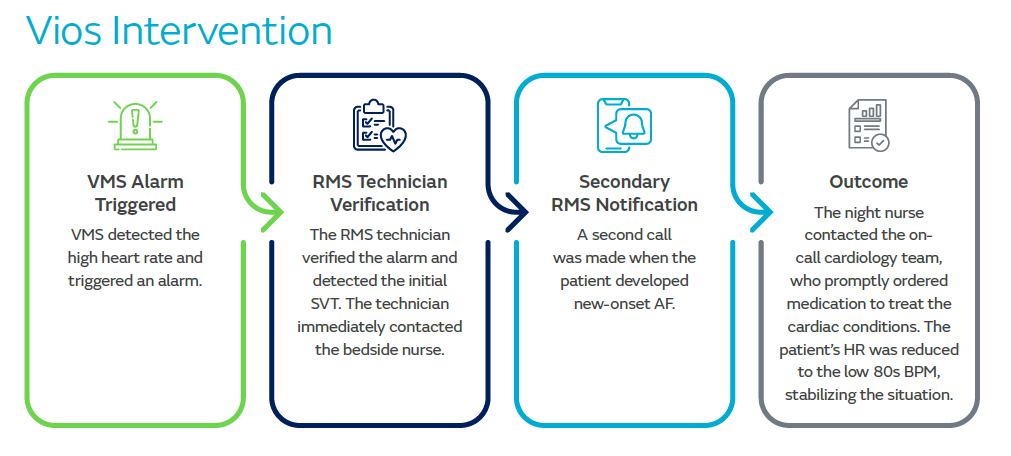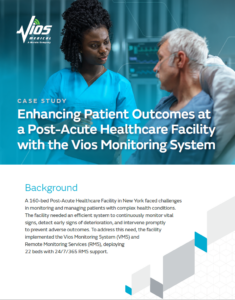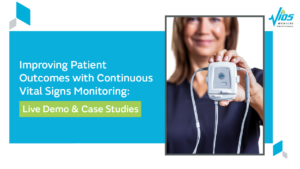
Enhancing Patient Outcomes at a Post-Acute Healthcare Facility
Background
A 160-bed Post-Acute Healthcare Facility in New York faced challenges in monitoring and managing patients with complex health conditions. The facility needed an efficient system to continuously monitor vital signs, detect early signs of deterioration, and intervene promptly to prevent adverse outcomes. To address this need, the facility implemented the Vios Monitoring System (VMS) and Remote Monitoring Services (RMS), deploying 22 beds with 24/7/365 RMS support.
Clinical Event I
A 77-year-old female was admitted with pneumonia and had a confirmed cardiac history with multiple comorbidities. Upon admission, she presented with sinus tachycardia, consistently maintaining a heart rate around 110 BPM, and exhibited tachypnea with a respiratory rate of 32-38 breaths per minute.
Overnight, the patient experienced an acute conversion into unprecipitated Supraventricular Tachycardia (SVT), with heart rate (HR) escalating from 109 to 176 BPM. The SVT then converted into new-onset Atrial Fibrillation (AF) with Rapid Ventricular Response.





